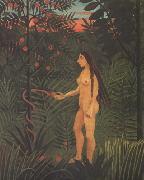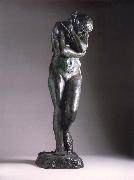Wholesale Oil Painting No Minimum |
|||||||||||
|
|
|||||||||||

|
|||||||||||
|
|
|
||||||||
Hans MemlingNetherlandish Northern Renaissance Painter, ca.1435-1494 Born in Seligenstadt, near Frankfurt in the Middle Rhein region, it is believed that Memling served his apprenticeship at Mainz or Cologne, and later worked in the Netherlands under Rogier van der Weyden (c. 1455?C1460). He then went to Bruges around 1465. There is an apocryphical story that he was a wounded at the Battle of Nancy, sheltered and cured by the Hospitallers at Bruges, and that to show his gratitude he refused payment for a picture he had painted for them. Memling did indeed paint for the Hospitallers, but he painted several pictures for them, in 1479 and 1480, and it is likely that he was known to his patrons of St John, prior to the Battle of Nancy. Memling is connected with military operations only in a distant sense. His name appears on a list of subscribers to the loan which was raised by Maximilian I of Austria, to defend against hostilities towards France in 1480. In 1477, when he was incorrectly claimed to have been killed, he was under contract to create an altarpiece for the gild-chapel of the booksellers of Bruges. This altarpiece, under the name of the Seven Griefs of Mary, is now in the Gallery of Turin. It is one of the fine creations of his more mature period. It is not inferior in any way to those of 1479 in the hospital of St. John, which for their part are hardly less interesting as illustrative of the master's power than The Last Judgment which can be found since the 1470s in the St. Mary's Church, Gda??sk. Critical opinion has been unanimous in assigning this altarpiece to Memling. This affirms that Memling was a resident and a skilled artist at Bruges in 1473; for the Last Judgment was undoubtedly painted and sold to a merchant at Bruges, who shipped it there on board of a vessel bound to the Mediterranean, which was captured by Danzig privateer Paul Beneke in that very year. This purchase of his pictures by an agent of the Medici demonstrates that he had a considerable reputation. |
||||||||
|
|
||||||||
Eve
Eve Painting ID:: 2955 |
1485
Art History Museum, Vienna 1485 Art History Museum, Vienna |
|||||||
|
|
||||||||
Henri RousseauFrench 1844-1910 Henri Rousseau Locations He was born in Laval in the Loire Valley into the family of a plumber. He attended Laval High School as a day student and then as a boarder, after his father became a debtor and his parents had to leave the town upon the seizure of their house. He was mediocre in some subjects at the high school but won prizes for drawing and music. He worked for a lawyer and studied law, but "attempted a small perjury and sought refuge in the army," serving for four years, starting in 1863. With his father's death, Rousseau moved to Paris in 1868 to support his widowed mother as a government employee. In 1871, he was promoted to the toll collector's office in Paris as a tax collector. He started painting seriously in his early forties, and by age 49 he retired from his job to work on his art. His wife died in 1888 and he later remarried. Rousseau claimed he had "no teacher other than nature", although he admitted he had received "some advice" from two established Academic painters, Felix Auguste-Clement and Jean-Leon Gerome. Essentially he was self-taught and is considered to be a naive or primitive painter. |
||||||||
|
|
||||||||
|
|
Eve
Eve Painting ID:: 27200 |
|
||||||
|
|
||||||||
Andrea del CastagnoItalian c1421-1457 Andrea del Castagno Location Italian c1421-1457 Andrea del Castagno Location Italian painter. He was the most influential 15th-century Florentine master, after Masaccio, of the realistic rendering of the figure and the representation of the human body as a three-dimensional solid by means of contours. By translating into the terms of painting the statues of the Florentine sculptors Nanni di Banco and Donatello, Castagno set Florentine painting on a course dominated by line (the Florentine tradition of disegno), the effect of relief and the sculptural depiction of the figure that became its distinctive trait throughout the Italian Renaissance, a trend that culminated in the art of Michelangelo. |
||||||||
|
|
||||||||
|
|
Eve
Eve Painting ID:: 32205 |
c. 1450
Fresco c. 1450 Fresco |
||||||
|
|
||||||||
Auguste RodinFrench Sculptor, 1840-1917 .French sculptor. Insolvent and repeatedly rejected by the École des Beaux-Arts, he earned his living by doing decorative stonework. Not until his late 30s, after a trip to Italy, did he develop a personal style free of academic restraints and establish his reputation as a sculptor with The Age of Bronze (exhibited 1878), whose realism was so great that he was accused of forming its mold on a living person. His Gates of Hell, a bronze door commissioned in 1880 for a proposed Musee des Arts Decoratifs, remained unfinished at his death, but two of its many figures were the bases of his most famous images, The Thinker (1880) and The Kiss (1886). His portraits include monumental figures of Victor Hugo and Honore de Balzac. Though these and many other works caused controversy for their unconventionality, he was successful enough that he could establish a workshop where he executed only molds, leaving the casting of bronze and the carving of marble to assistants. To his sculpture he added book illustrations, etchings, and numerous drawings, mostly of female nudes. |
||||||||
|
|
||||||||
|
|
Eve
Eve Painting ID:: 44993 |
mk183
Bronze green and brown patina
mk183 Bronze green and brown patina |
||||||
|
|
||||||||
|
Auguste Rodin French Sculptor, 1840-1917 .French sculptor. Insolvent and repeatedly rejected by the École des Beaux-Arts, he earned his living by doing decorative stonework. Not until his late 30s, after a trip to Italy, did he develop a personal style free of academic restraints and establish his reputation as a sculptor with The Age of Bronze (exhibited 1878), whose realism was so great that he was accused of forming its mold on a living person. His Gates of Hell, a bronze door commissioned in 1880 for a proposed Musee des Arts Decoratifs, remained unfinished at his death, but two of its many figures were the bases of his most famous images, The Thinker (1880) and The Kiss (1886). His portraits include monumental figures of Victor Hugo and Honore de Balzac. Though these and many other works caused controversy for their unconventionality, he was successful enough that he could establish a workshop where he executed only molds, leaving the casting of bronze and the carving of marble to assistants. To his sculpture he added book illustrations, etchings, and numerous drawings, mostly of female nudes. Eve mk183 Bronze green and brown patina |
||||||||
|
|
||||||||
|
Prev Next
|
||||||||
|
|
||||||||
|
Related Paintings to Auguste Rodin :. |
||||||||
|
|
||||||||
|
CONTACT US |




